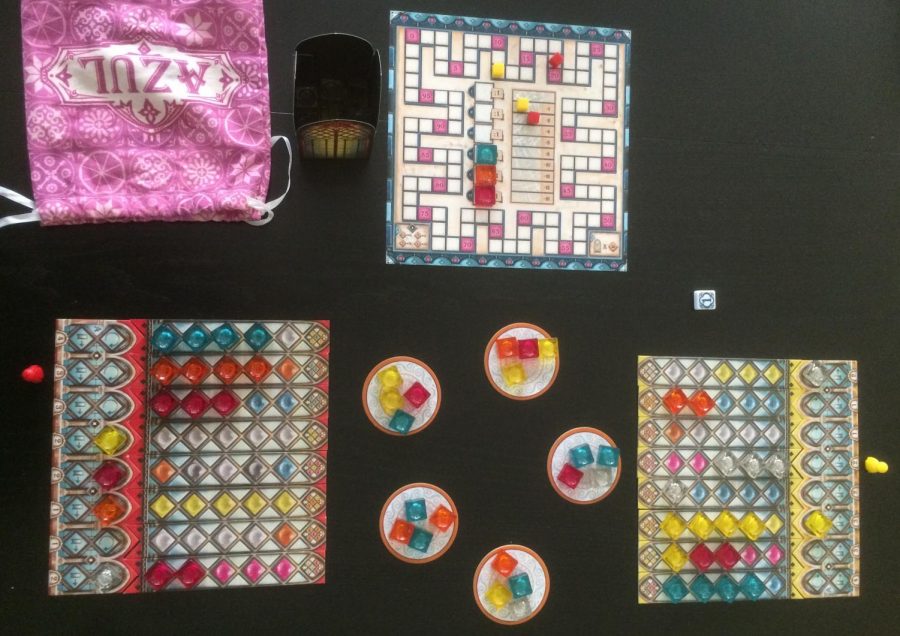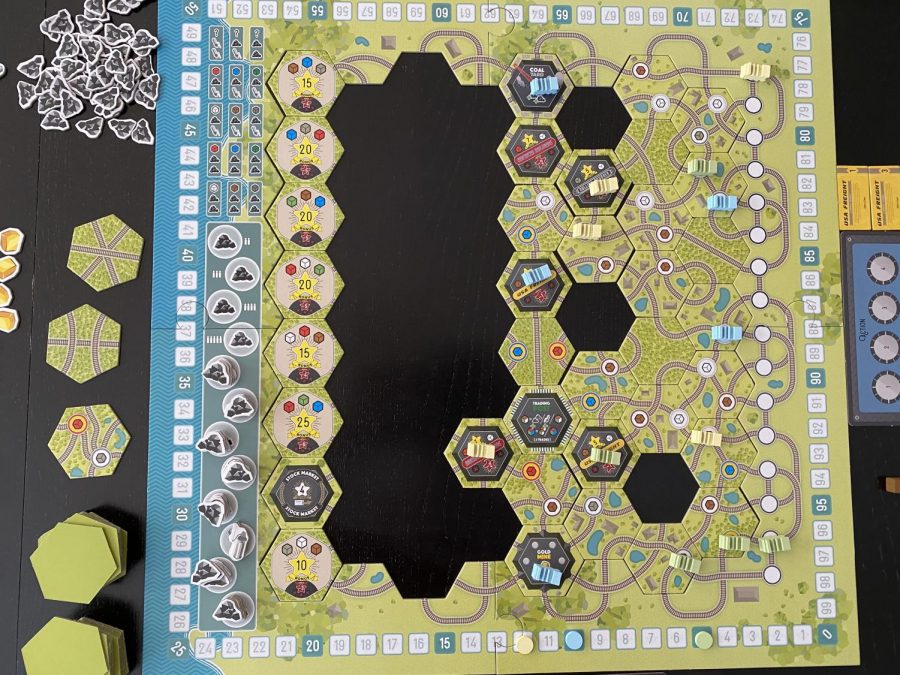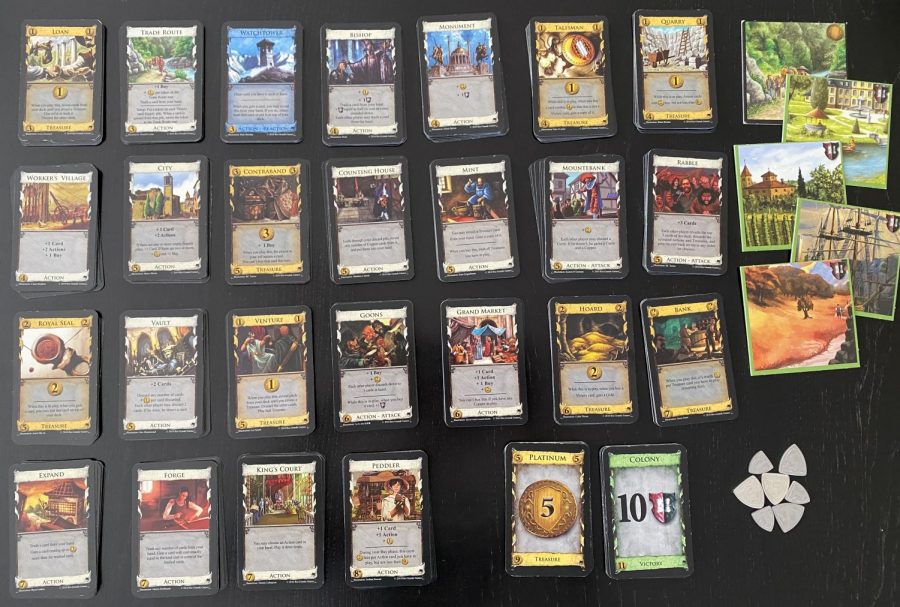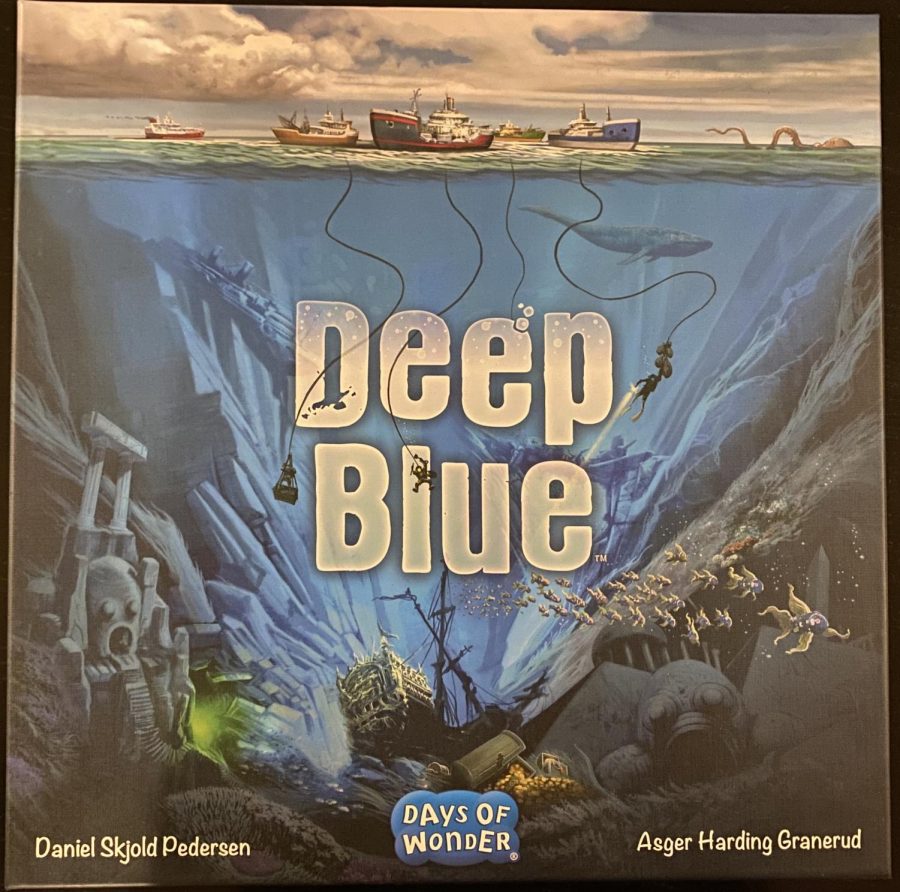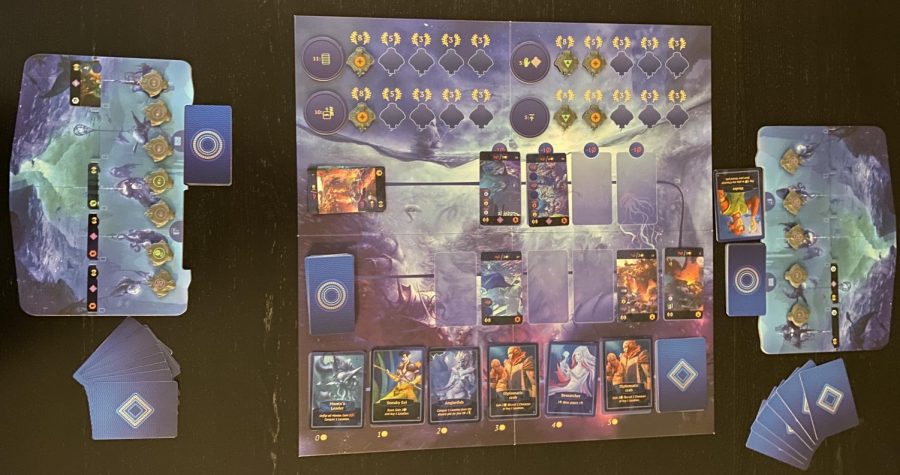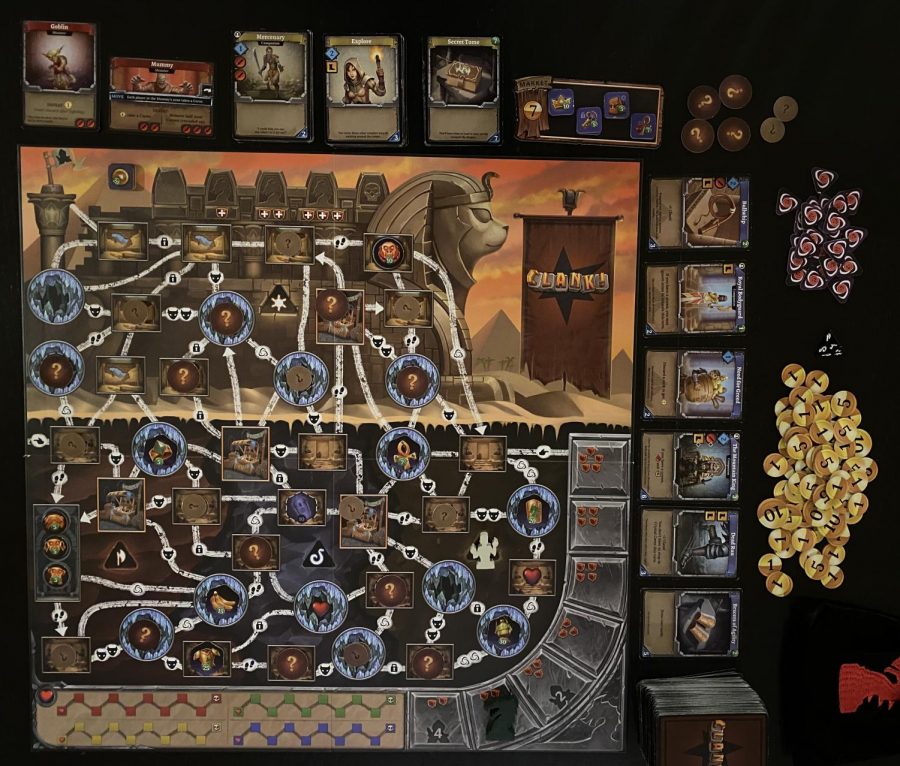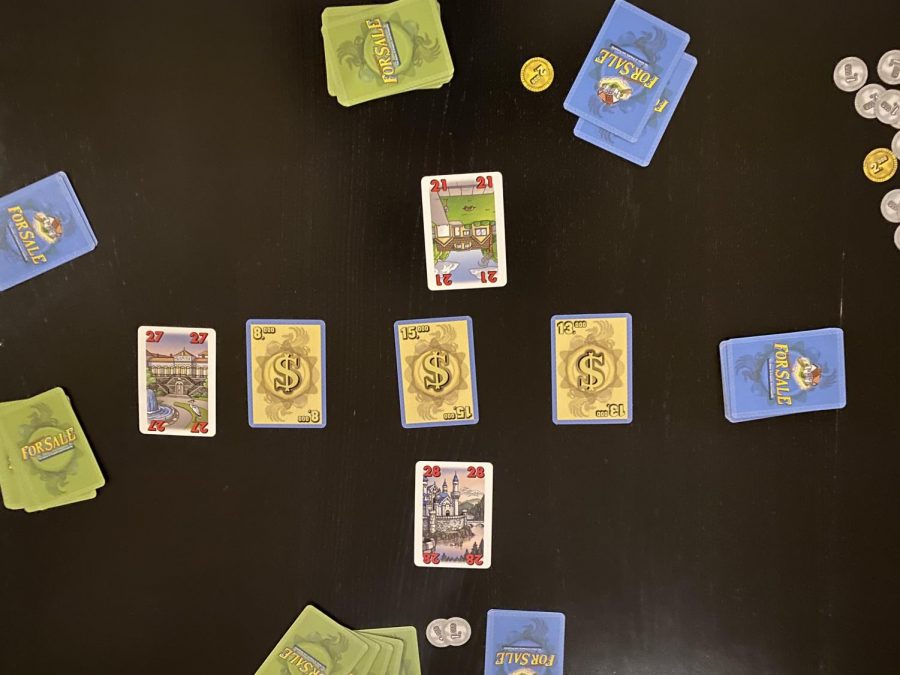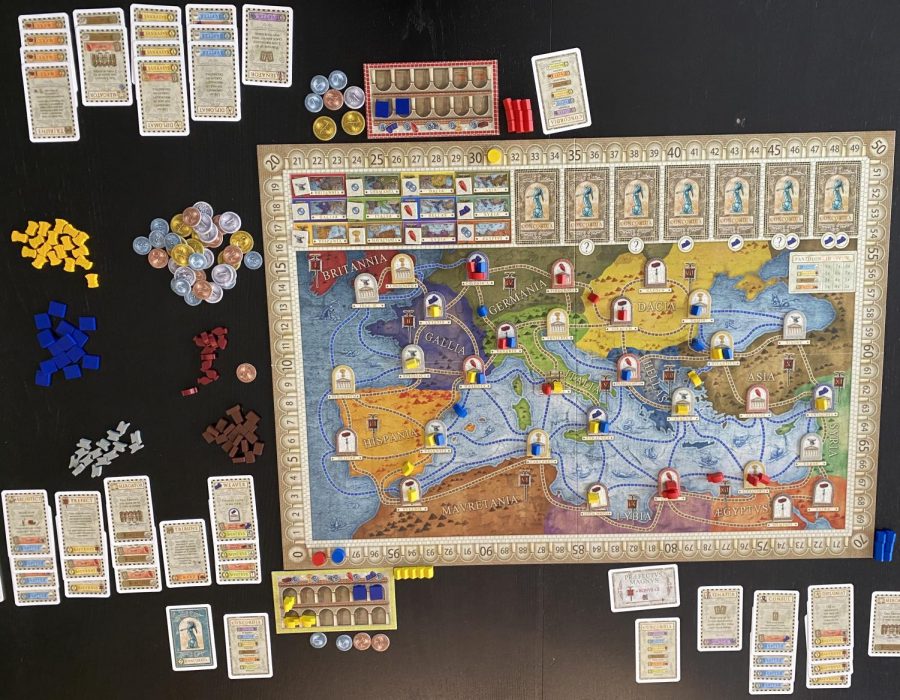This week, I am reviewing a game that I got by accident. I considering purchasing the regular Azul game, but I ended up buying Azul’s sequel, Azul: Stained Glass of Sintra, instead. Both are stand alone games published by Plan B Games and inspired by Portuguese tiles, also known as azulejos. They both play with 2-4 players in less than an hour and use the same mechanism to collect tiles. The only difference in Michael Kiesling’s sequel to Azul is what you do with the tiles. Let’s learn how to play!
How to Play
At the start of the game, each player will set up their board by placing their eight stained glass patterns in a random position and side on their board. Each player also has a glazier that will start under their leftmost pattern. On the scoring board, each player will have a cube on the scoring track and the broken glass track. Different color tiles are placed on the six-round track as well. The rest of the tiles are put in the bag. There are also factories, circular cardboard, that are placed in the middle of the table. The number of these depends on how many people are playing.
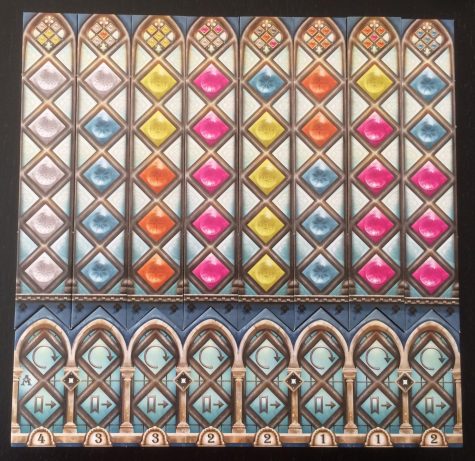
At the start of the round, someone will draw tiles from the bag and place four on each factory. The first player puts the first player tile in the middle of all the factories. Starting with that player, one must select tiles from the factories. You must take all of the tiles of one color from one factory. The rest of the tiles on that factory are placed in the middle of the table with the first player marker. Alternatively, a player can choose to take all the tiles of one color from the middle of the table. The first player to do this will get the first player marker for the next round.
After collecting tiles, players must place these tiles on one of their patterns. Each pattern requires five tiles of certain colors, and they must choose a pattern that has the color tiles they picked. Also, they must pick a pattern where their glazier is or any pattern to the right. The glazier moves to the pattern you add tiles to, so it will keep moving right. There is a way to bring it back to the left that I will get to later.
Place the tiles you collected on the matching colors on the pattern you selected. If you have extra tiles or received the first player marker, move your cube on the broken glass track down one space for each extra tile you have. Put the extra tiles in the glass tower. Broken glass will give you negative points, and you will reset your cube on that track if you make it all the way to the bottom of it.
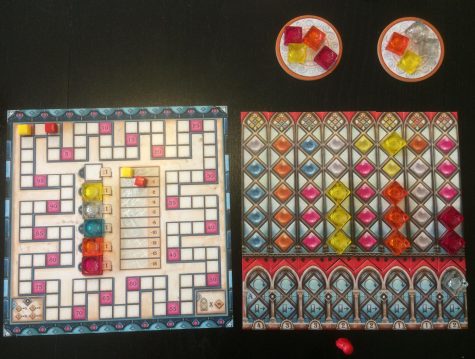
If you have placed all five tiles on a pattern, you will immediately score points for it. Look at the tile on the round tracker for the current round. Each tile of that color on a finished glass panel is worth one bonus point. Then, place one tile from this pattern on an empty space on your player board below to mark that this panel is complete. If you have one tile in this column of your player board, flip the glass panel to its other side. If you have two tiles, meaning you’ve completed both sides, put the pattern in the box. Each column on your player board has a point value. When you complete a pattern, you will get the point values for the column the pattern was in and every column to the right of it that has at least one tile in it.
As you work on your tiles, your glazier will move further right. Instead of taking tiles and placing them on a pattern, you can spend your turn to move your glazier back to your leftmost pattern.
That is how you play Azul: Stained Glass of Sintra. Each round will end when there are no more tiles to collect. After the sixth round, there will be a final scoring where players will get points for leftover tiles on their unfinished patterns, lose points for broken glass, and get points based on which patterns they finished. There are two ways to do that last part of the scoring depending on whether you are playing on side A or side B. Side A divides your columns into four groups of two columns, and players get points based on how many tiles, marking completed patterns, they have in each group. Side B will give you points equal to the number of panels you removed from your board times the number of tiles of one color on your player board. The player with the most points is the winner.
Final Thoughts
Azul: Stained Glass of Sintra is a fun game to play despite having some strange elements to its design. It’s a very easy game to learn and can be played with kids and grandparents. It works well at all of the player counts, although more people will naturally add time to the game and give you less control.
The mechanism of collecting tiles is amazing and the best part of the game. As the similarity between the different Azul games, I think it is the only reason why Azul has a sequel.
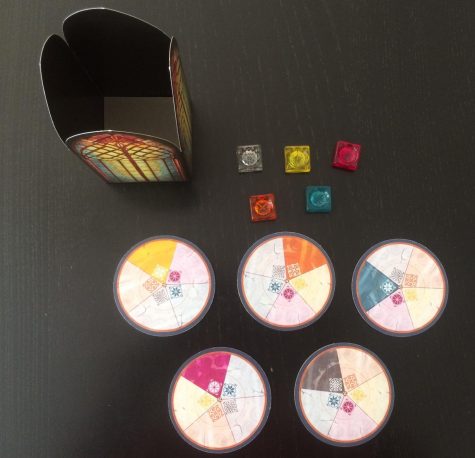
The reason why the mechanism is so interesting is because you only get one chance with each factory before the tiles get dumped into the middle. You have to figure out what tiles you need, knowing that each other player could get rid of a factory, and limit your options for your next turn. It’s also interesting how you need to get the exact amount of each color to complete your patterns, so you have to decide whether to take a few tiles at a tile or to wait for a bunch of tiles of that color to end up in the middle on your turn.
Then there is also that broken glass track that penalizes you if you can’t get the exact amount. That’s a very thematic part of the game which is also part of the original Azul game, and I can understand why it is something that returned in Stained Glass of Sintra. Sometimes a ton of one color can help you finish your pattern, but if you don’t have a place for that color, you could shatter a lot of glass if you end up having to take a ton of glass pieces you don’t need at the end of the round. There’s a lot of neat player interaction and tension with the tile collecting, and that makes this game great.
Putting the tiles on your patterns is also quite tactical. You can see what colors are in the factories and the middle and determine which pattern to place your tiles on. The main thing to consider is how far you are willing to move your glazier. Moving your glazier too far right means you will have to reset it left more quickly and pass up more opportunities to collect tiles. However, completing patterns on the right are beneficial because they will continue to score points every time you finish a pattern to the left in the future. You also have to consider when it is worth breaking glass to keep your glazier closer to the left or to finish a pattern.
However, there are a few parts of the design that are just okay. First of all, the color bonus is quite unnecessary. It seems like the designer wanted to make the round track more meaningful. You have no control over what tiles are showing up each round, and even when you do plan to finish a certain patter during the round with the corresponding bonus, the position of the panels is far more significant for scoring than the color bonus.
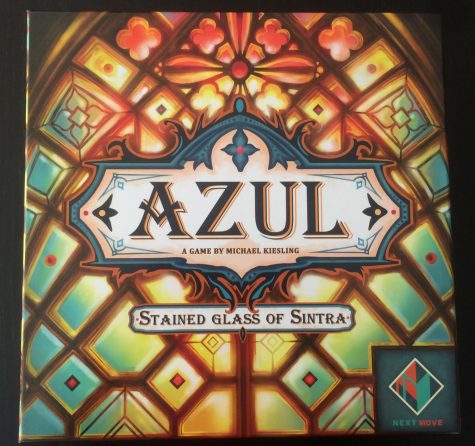
Also, the broken glass track does not follow any patterns for the increments that you lose points. Each space jumps to minus one to minus three points randomly compared to the previous space, which makes no sense since you will restart the track when you reach the end of it anyway. It just seems random, which is not expected from a professional game.
Putting out your patterns at the start of the game is also problematic. Despite the asymmetrical start, some people will get better positions that happen to correlate with the color bonuses, and other people will end up bad distributions of certain colors. In addition, the random pattern layout doesn’t add as much replayability as it would seem like.
The bottom of your player board helps with final scoring. Both side A and side B work and that adds a tad of replayability to the game since you can play each side a few times. However there is nothing else to change the game experience, so the game is less fun each time because it feels the same.
Overall, Azul: Stained Glass of Sintra is an excellent game that I recommend you check out. Considering that Azul and this both use the same tile drafting mechanism and a similar purpose for the tiles you drafted, I don’t think you need to have both games. I never played the original Azul, so I can’t tell which one is better, but Azul: Stained Glass of Sintra is a great game and easier to find than Azul. You can buy a copy of it online for $30-45. I give this game a 7 out of 10 because of its great tile drafting mechanism, nice components, and interesting strategies; it had a few small issues and is a little lucky with which tiles are in play during the round, but that is not a big deal because it is a family weight game.

